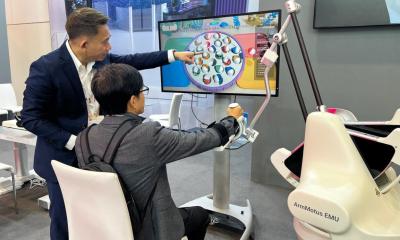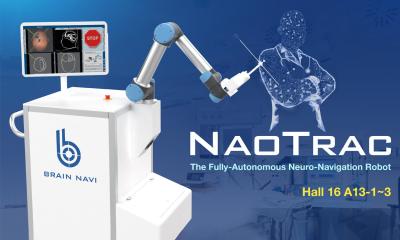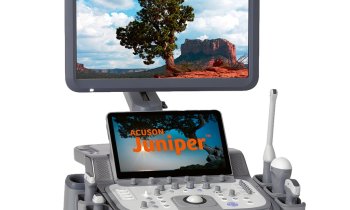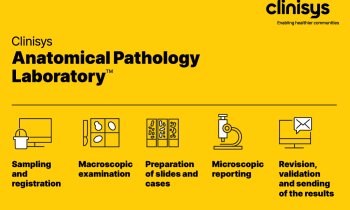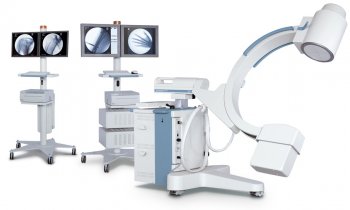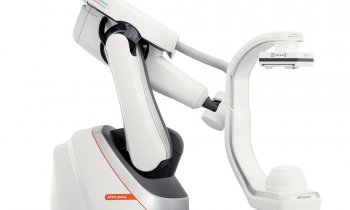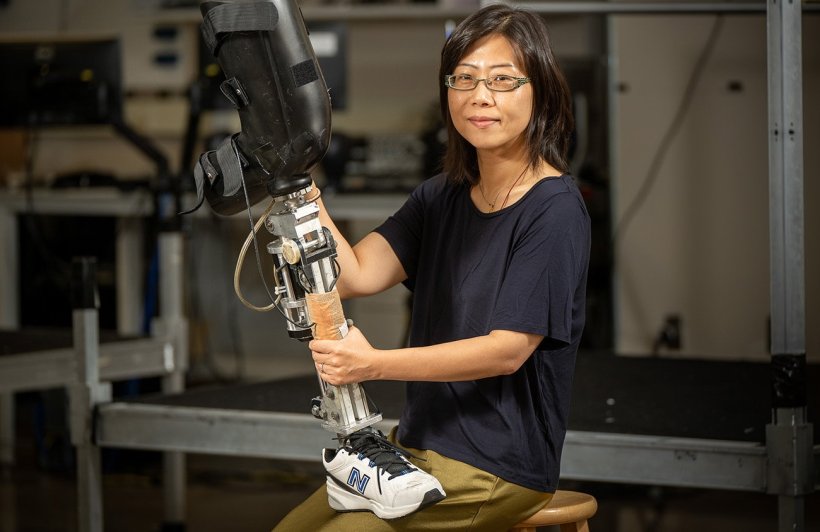
Image credit: Marc Hall, NC State University
News • Human-robot symbiosis
Prosthetic technology to restore natural walking after amputation
Modified robotic prosthetics could help address hip, back problems for amputees
Researchers have developed a new algorithm that combines two processes for personalizing robotic prosthetic devices to both optimize the movement of the prosthetic limb and – for the first time – also help a human user’s body engage in a more natural walking pattern. The new approach can be used to help restore and maintain various aspects of user movement, with the goal of addressing health challenges associated with an amputation.
The paper is published in the journal IEEE Transactions on Robotics.
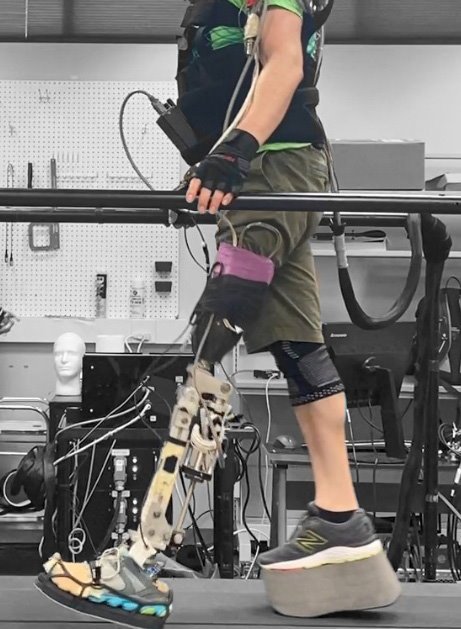
Image credit: Varun Nalam, NC State University
“Algorithms designed to improve the behavior of robotic prosthetics are not new – but this is the first algorithm that also holistically improves the physical behavior of the person interacting with those prosthetics,” says Varun Nalam, co-lead and co-corresponding author of a paper on the work.
“When people have an amputation above the knee, it affects the way they move other parts of their body,” says Nalam, an assistant research professor in the Lampe Joint Department of Biomedical Engineering at North Carolina State University and the University of North Carolina at Chapel Hill. “That can lead to lower back pain, hip problems and so on. Robotic prostheses to this point have focused on replacing the movement of the missing joint. So, for example, the software that governs the behavior of robotic prosthetic knees has focused solely on optimizing the movement of the prosthetic knee joint.
“Our goal with this work was to develop a new algorithm that allows us to do two things,” says Nalam. “We still want to ensure that the prosthetic knee joint is functioning properly – but we also want to ensure that the user’s body is also moving in the same way that it would have before the amputation. This not only gives the user the full range of leg motion, but will also help to avoid lower back pain, hip problems, et cetera.”
The new research builds on previous work, in which the researchers developed an intelligent system for “tuning” powered prosthetic knees. That system allowed patients to walk comfortably with the prosthetic device in minutes, rather than the hours necessary if the device were tuned by a trained clinical practitioner. The system was the first to rely solely on reinforcement learning to tune a robotic prosthesis. “That work achieved optimal prosthesis control via a reinforcement learning algorithm,” says Helen Huang, senior author of the paper and the Jackson Family Distinguished Professor of Biomedical Engineering in the Lampe Joint Department. “However, it focused solely on the behavior of the prosthetics. In this new work, we’ve built on that earlier system with a new algorithm that uses inverse reinforcement learning to account for the movement of both the prosthetic and the person using it.”
Incorporating the new algorithm improved hip range of motion for all five subjects, which demonstrates that it can make a difference for hip health
Varun Nalam
The robotic prosthetic knee incorporates sensors to track its movement. In proof-of-concept testing, the researchers also focused on the user’s hip movement, which was monitored via sensors connected to the wearer. “The new algorithm essentially accounts for the movement of both joints – the prosthetic knee and the user’s hip – and adjusts the behavior of the prosthetic knee to help the user exhibit their natural hip movement,” says Nalam. “While we focused on hip movement for this study, the algorithm could also be used to help users with trunk movement, walking symmetrically or other aspects of human performance,” says Huang.
To test the new algorithm, the researchers recruited five study participants: two participants were people who had an amputation above the knee, three participants had not had an amputation. All five study participants performed a series of tasks using a robotic prosthetic knee under two different conditions. In the first condition, the knee was operated using software that incorporated only the earlier system for knee control. In the second condition, the software incorporated the new combination of algorithms.
“The main finding here was that incorporating the new algorithm improved hip range of motion for all five subjects, which demonstrates that it can make a difference for hip health,” says Nalam. “We also found that the new algorithm changed the gait of our study subjects in ways which indicate that movement felt more natural for users. For example, they took longer steps when walking.”
“From a practical standpoint, next steps include working with clinicians to see how it affects user well-being over time,” says Huang. “We’re also interested in working with companies that make robotic prosthetics to explore questions associated with incorporating this approach into their software.”
“From a research standpoint, we are interested in determining how this approach can be used to help address a range of human locomotive behaviors,” says Nalam.
Source: North Carolina State University
24.11.2025




